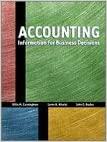Jim Q is the president of Kluger Company, a medium-sized manufacturing company that sells a variety of
Question:
Jim Q is the president of Kluger Company, a medium-sized manufacturing company that sells a variety of products. The company has been in business for many years and has had a history of increasing production, sales, and profits. Jim’s compensation arrangement states that he receives a salary plus a bonus based on the company’s performance.
The bonus is 10 percent of the amount by which the company’s actual profit exceeds its target profit for the year. In computing its “profit,” the company disregards income taxes and Jim’s bonus. The company uses C-V-P analysis to determine the production and sales units needed to achieve its yearly target profit. The “units” that the company produces and sells are based on a constant product mix of all its products. The company also’uses traditional flexible budgeting based on normal activity to determine its variable and fixed costs. During the past year, the company had a target profit of $1.2 million, based on estimated total fixed costs of $6 million, an estimated $0.60 contribution margin per unit, and a planned production (and sales) volume of |2 million units. During that year, its actual production (and sales) volume also was |2 million units. For the coming year, the company has used the same estimates, except that it has set its target profit at $1.8 million based on planned production (and sales) of 13 million units.
You are a management accountant who just started working for Kluger. You are knowledgeable about activity-based costing and have done some fairly extensive studies about the company’s factory overhead. You have determined that many of the factory overhead costs that the company has always considered to be fixed do, in fact, vary with different cost drivers. You have set up several activity pools based on these cost drivers and, as a result of applying activity-based costing, have found a very high correlation between Kluger’s estimated and actual variable factory overhead costs, as well as its estimated and actual fixed overhead costs, over the past several years. Based on these findings, you are confident that the company’s contribution margin is $0.50 per unit and that its total fixed costs are $4 million.
One day, you meet Jim Q in the lunchroom and he says, “Do you have any ideas about how we can better manage our factory costs?” You respond that you would like to implement activity-based costing in the factory. He says: “I’ve studied activity-based costing, and | don’t think it would help the company. Setting up all these activity pools is too much work, costs too much, and doesn’t give us any better information than we had before. Let’s just stay with the traditional flexible budgeting that we use now.” You are surprised by Jim’s response and go back to your office to think about what he said.
Required: (1) Draw a graph of Kluger’s total estimated fixed costs and contribution margin for last year under traditional flexible budgeting (TFB). Label the lines on your graph.
(2) On the same graph that you drew in (I), draw Kluger’s total estimated fixed costs and total contribution margin under activity-based costing
(ABC). Label the new lines on your graph.
(3) Using the graph, briefly explain why Jim Q may prefer traditional flexible budgeting.
(4) How could Jim’s compensation arrangement be changed so that he might be more receptive to implementing activity-based costing? Give an illustration for this past year and for the coming year.
Step by Step Answer:

Accounting Information For Business Decisions
ISBN: 9780030224294
1st Edition
Authors: Billie Cunningham, Loren A. Nikolai, John Bazley




